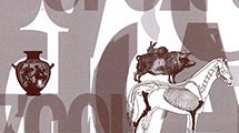

 Anthropozoologica
45 (2) - Pages 27-42
Anthropozoologica
45 (2) - Pages 27-42In this paper the evidence for the introduction of the crested porcupine (Hystrix cristata L. 1758) in Italy is reviewed and hypotheses concerning the timing and modalities of this event are brought forward. The crested porcupine current distribution outside Africa is limited to Sicily and the Italian Peninsula. Palaeontological data indicate that porcupines were present in Italy and other parts of Europe in the Pleistocene (possibly up to the early Holocene), but there is now broad consensus that these belonged to different species, now extinct. Apart from some unreliable prehistoric finds, there is no evidence that porcupines occurred again in Italy and the rest of Europe before historic times. This led many authors to suggest that the Romans may have been responsible for the introduction of the species in Italy, but such assumption was largely speculative. The available evidence in fact indicates that the crested porcupine does not occur in Italy before late Antique or even early medieval times and that it never spread in Europe beyond the Italian Peninsula (and Sicily). The long chronological gap existing between Pleistocene and late Holocene specimens strongly suggests that the presence of the species in historic times in Italy is the result of a human-induced introduction. Variations in the morphometric and genetic characteristics of current porcupine populations in Italy and differences in the timing of the introduction between different regions suggest that the species was probably introduced as a consequence of multiple events.
Porcupine, Italy, Sicily, fossils, zooarchaeology, introduction, Romans, late Antiquity.